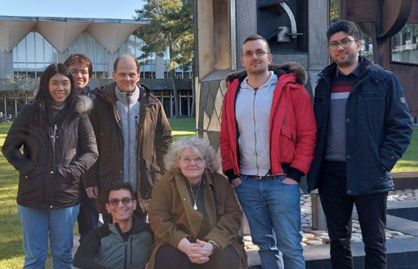Bioanalytical Systems

The Bioanalytics group
In general, we are strong in development of any chip-based bioanalytical tools for fundamental research and applications of bioelectrochemistry and biosensing. Applications range from bioanalysis in cell biology as well as environmental, food and agricultural monitoring.
Our current research vision is focused on developing chip-based tools for studying cells and tissue in both 2D and 3D with particular focus on neurodegenerative diseases like Parkinson´s (PD) and Huntington´s (HD) disease, which involves development of:
- Multi-compartmentalised organoid-on-chip systems for studying communication between cell organoids representing different brain regions for modelling PD, combining optogenetics and electrochemical and optical detection (calcium influx) of exocytotic events.
- Multi-compartmentalised cell/organoid on chip systems to study the Brain-Gut axis hypothesis, involving the influence of the gut microbiota on the pathogenesis of PD.
- Implantable wirelessly controlled optogenetic neural probes and neurovascular units for potential therapy in PD and HD, respectively.
Enabling technology:
To achieve the above research vision, we are exploring a multitude of techniques, which involves:
- Electroanalysis (voltammetry, amperometry) for detection of neurotransmitters including biosensor development as well as monitoring cellular behaviour (adhesion, proliferation, differentiation, cytotoxicity) using electrical impedance spectroscopy.
- Cleanroom fabrication and fast prototyping of 2D and 3D microelectrodes (pyrolytic carbon and gold) and optical waveguides for optical stimulation and fast real time electrochemical detection (optogenetics).
- Fast prototyping of microfluidic devices for 2D and 3D cell culture using 3D printing (extrusion and stereo lithography based), micromilling, and soft lithography.
- Embedded printing of human stem cells for creating vascularised 3D tissue constructs that could be used for either implantation or disease modelling.
- Development of optoelectrical control systems to enable optical stimulation of cells and organoids with subsequent real-time detection of neurotransmitter release using both electrochemical detection and calcium influx imaging.
Collaborations
Our research is by nature highly cross-disciplinary, and we collaborate both nationally and internationally with scientists within neuroscience, cell replacement therapy, nano/microfabrication, as well as with industry.


